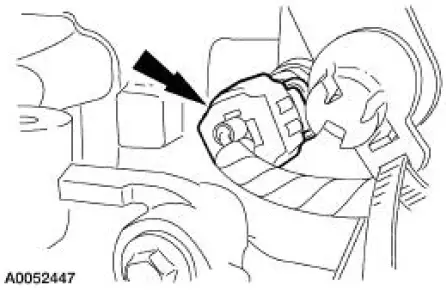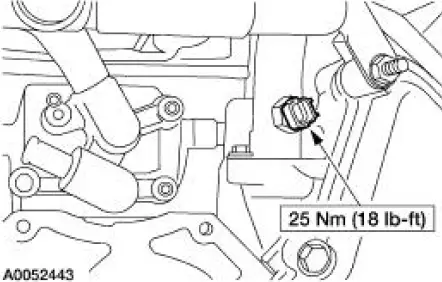Ford Mustang (1999-2004) Service Manual: Engine Coolant Temperature (ECT) Sensor - Cobra
Material
| Item | Specification |
| Pipe Sealant with Teflon D8AZ-19554-A | WSK-M2G350-A2 |
Removal and Installation
1. Partially drain the engine cooling system. For additional information, refer to Section.
2. Disconnect the engine coolant temperature (ECT) sensor electrical connector.

3. Remove the ECT sensor

4. To install, reverse the removal procedure.
- Apply sealant to the ECT sensor threads.
 Engine Coolant Temperature (ECT) Sensor - 4.6L (2V)
Engine Coolant Temperature (ECT) Sensor - 4.6L (2V)
Removal
1. Disconnect the battery ground cable. For additional information,
refer to Section.
2. Partially drain the cooling system. For additional information, refer
to Section.
3. Disc ...
 Engine Coolant Temperature (ECT) Sensor - Mach I
Engine Coolant Temperature (ECT) Sensor - Mach I
Material
Item
Specification
Pipe Sealant with Teflon
D8AZ-19554-A
WSK-M2G350-A2
Removal and Installation
1. Remove the air intake scoop. For additional information, refer to
S ...
Other materials:
Daytime Running Lamps (DRL) (Diagnosis and Testing)
Refer to Wiring Diagrams Cell 97 , Daytime Running Lamps for schematic
and connector information.
Special Tool(s)
73III Automotive Meter or
equivalent
105-R0057
Principles of Operation
Daytime Running Lamps (DRL)
The daytime running lamp ...
Principles of Operation
Power Window Control
NOTE: Battery power and ground must be removed before disconnecting the
GEM connectors to
avoid setting false DTCs.
The driver power window one-touch down operation is controlled by the
generic electronic module
(GEM). This featur ...
Opening the convertible top
Note: Do not store articles behind rear seat. Articles stored in the
convertible top stowage compartment may break the rear glass window
when the top is opened.
Note: Opening the convertible top when the top material is wet may
cause mold or mildew.
The conv ...
